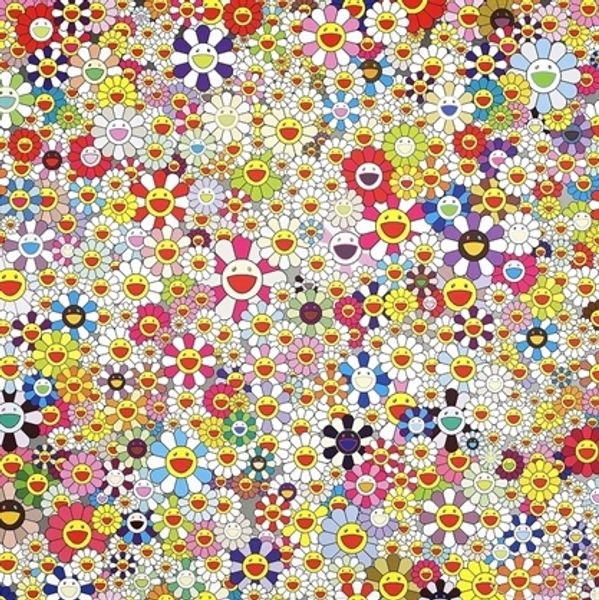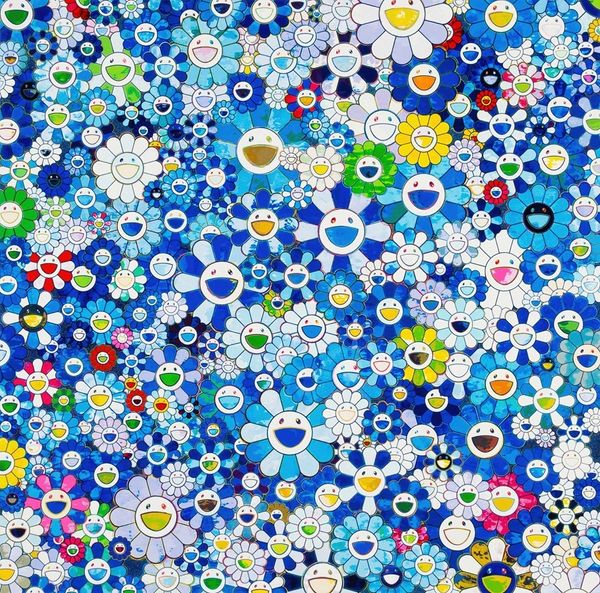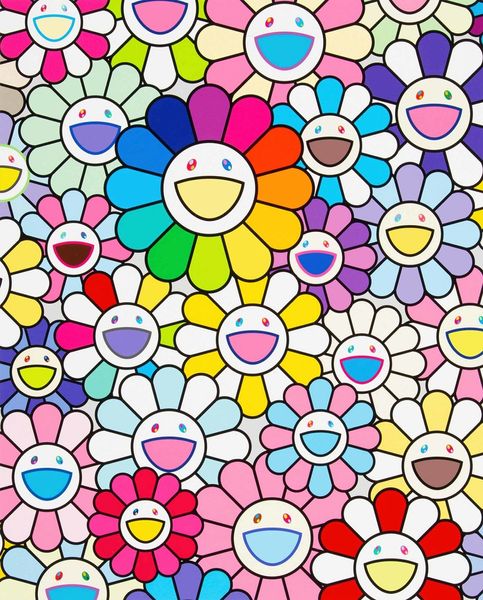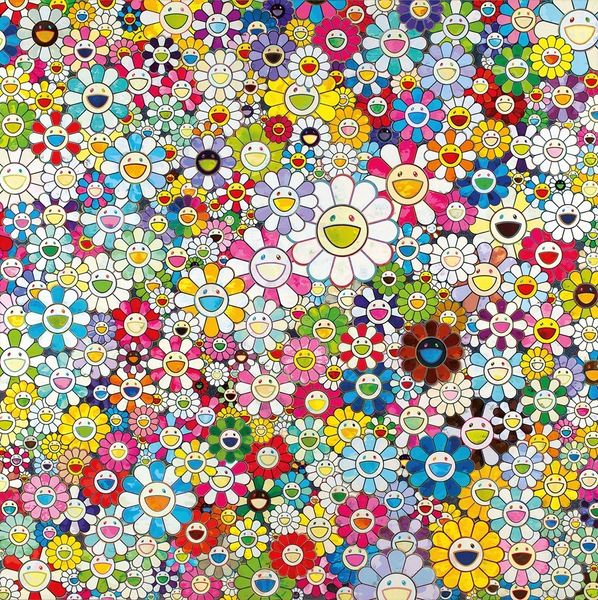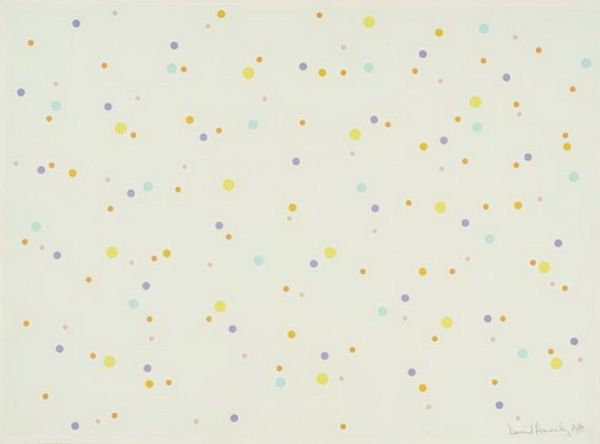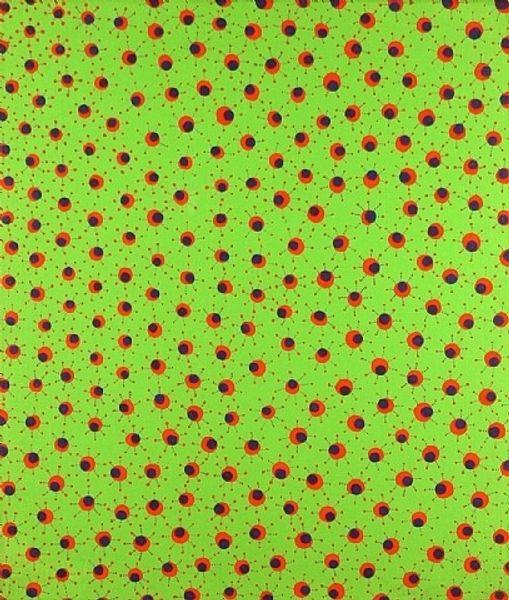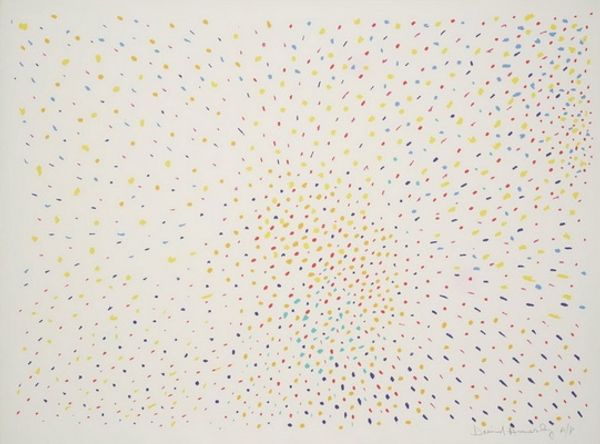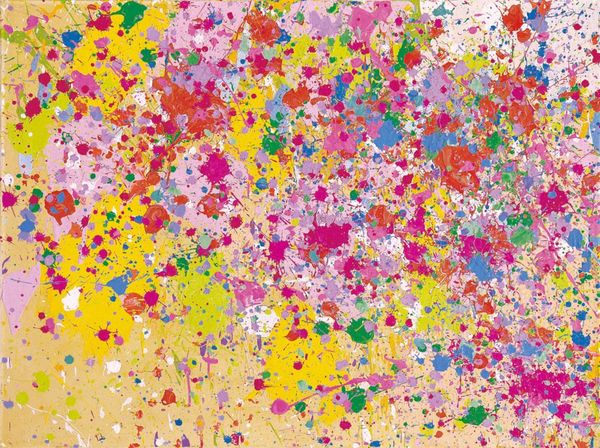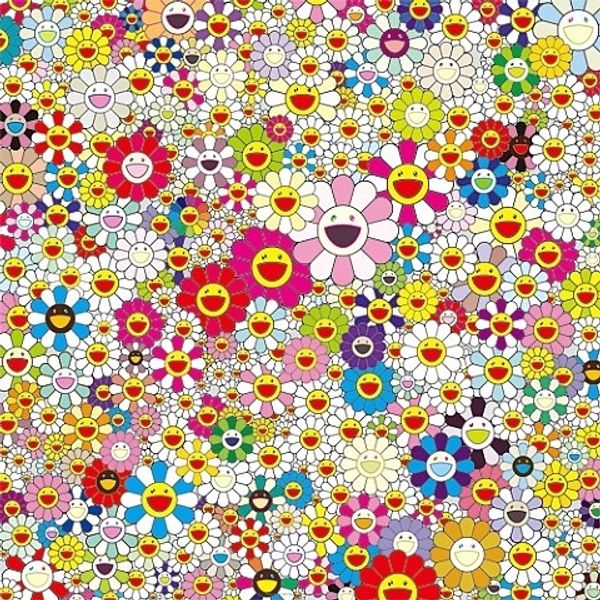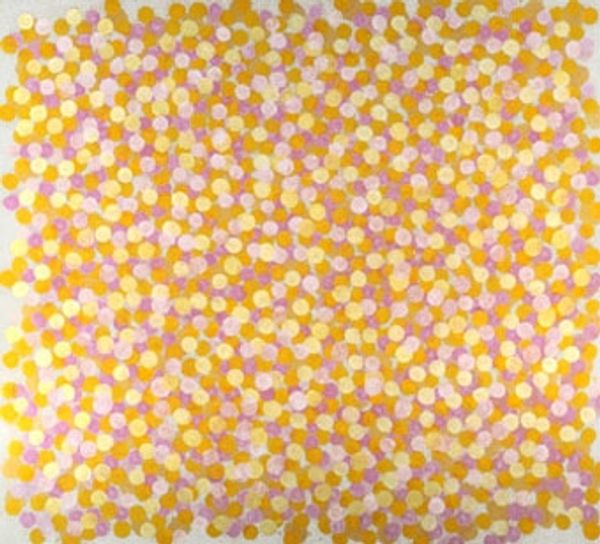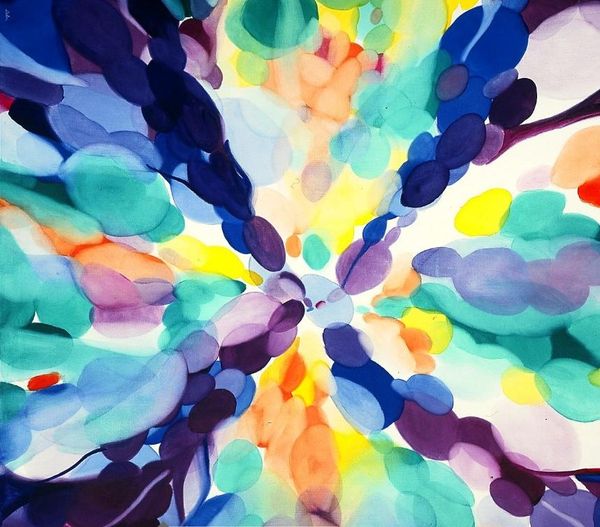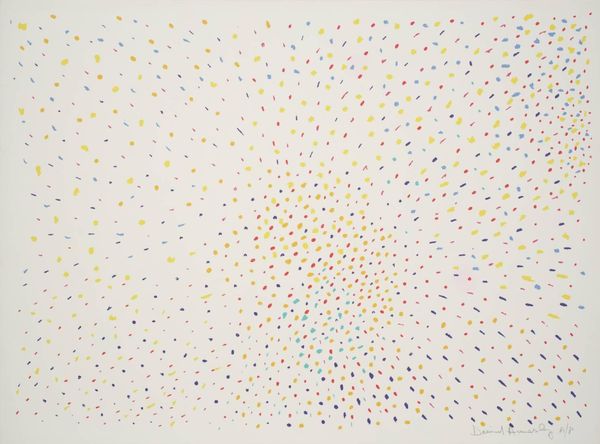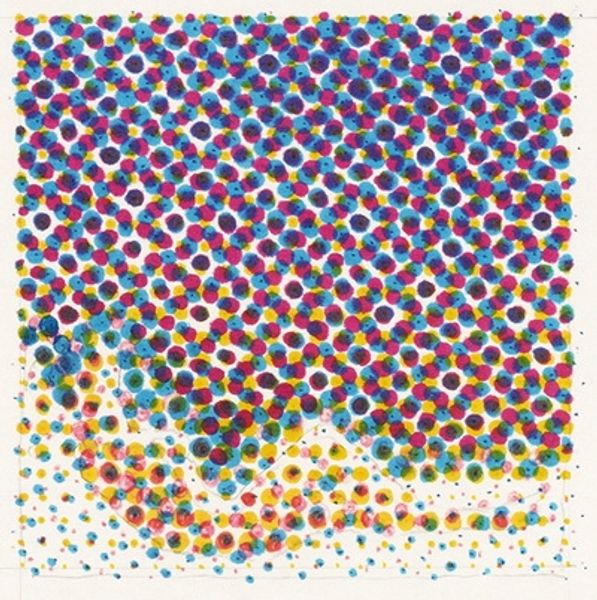
painting, textile, acrylic-paint
#
contemporary
#
random pattern
#
painting
#
pattern
#
textile
#
acrylic-paint
#
text
#
geometric pattern
#
abstract pattern
#
organic pattern
#
repetition of pattern
#
vertical pattern
#
abstraction
#
line
#
pattern repetition
#
layered pattern
#
funky pattern
#
repetitive pattern
Copyright: Yayoi Kusama,Fair Use
Curator: Up next is "Dots," an acrylic on canvas piece completed by Yayoi Kusama in 2004. Editor: Oh, it's... happy. Irresistibly cheerful. A chaotic explosion of pastel bubbles, if bubbles were more geometric. Curator: That initial reaction is key. Kusama's dots aren't simply decorative; they represent, for her, a manifestation of her own mental state, of obliteration, a strategy to confront her anxieties about infinity and self. Editor: So the relentless repetition isn't just aesthetic, it’s deeply personal and reflects the societal treatment of mental health? How are these kinds of intense repetitive practices treated in institutions? Curator: Precisely. Kusama willingly lives in a psychiatric institution, which also informs the context in which we view this and much of her work. By voluntarily institutionalizing, she contests typical assumptions about patient agency and societal constructions of "madness". We also have to consider the market and institutional embrace of what was initially labeled as 'outsider art'. Editor: And the aesthetic echoes with the 60's counterculture's exploration of psychedelia and expanded consciousness. There’s a vibrant, almost hallucinatory quality to it, but rendered in such clean lines. Did her choice of patterns reflect any of the feminist art of the era? Curator: It absolutely did. Kusama was working simultaneously with many feminist artists in that era but had issues around some art practices becoming commercial in New York. Some have even pointed to moments where her pieces were later copied and passed on without any critical or commercial gains to Kusama herself, such as Claes Oldenburg. Editor: So, the repetitive dots, these infinitely small markers of her self, become both an incredibly personal and a widely political symbol, about the role of women, Japanese immigrants, and mental health visibility. Curator: It truly is a microcosm of larger socio-political issues – her deliberate aesthetic choices making very visible arguments. I appreciate your seeing her intention. Editor: It brings a whole new depth to the seemingly simple, happy surface. An excellent piece.
Comments
No comments
Be the first to comment and join the conversation on the ultimate creative platform.
